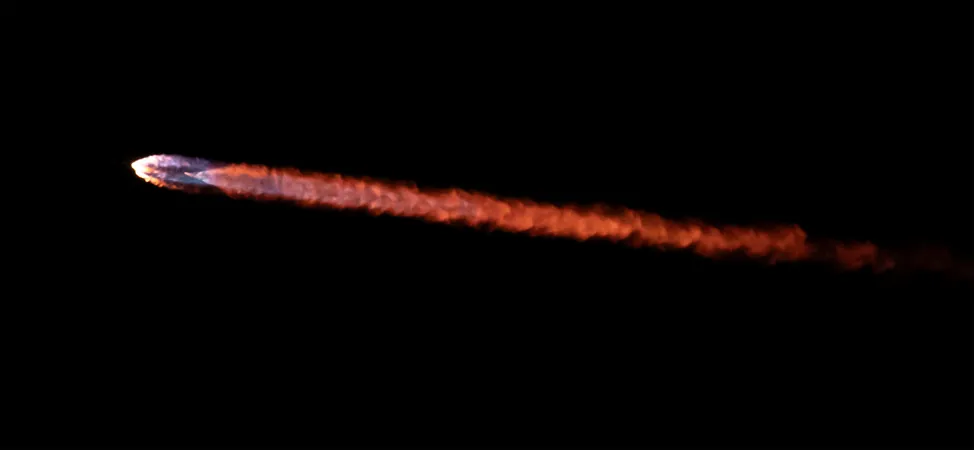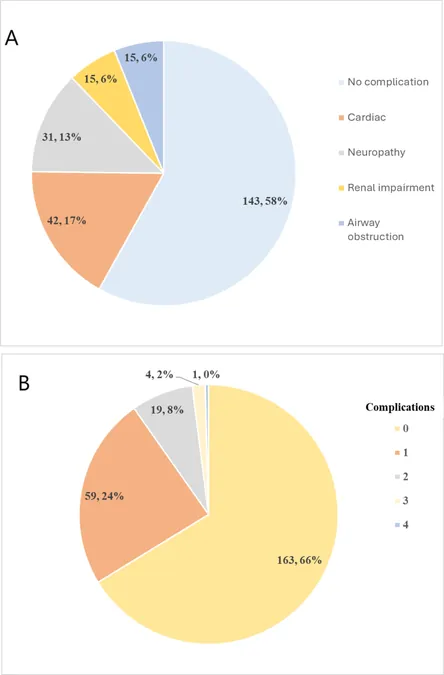
SpaceX's Starlink Launch Caps Off Record-Breaking Year in Space Exploration!
2024-12-31
Author: Wei Ling
A Landmark Year in Space Exploration
In a monumental achievement for the space industry, SpaceX successfully launched its Starlink Group 12-6 mission on Tuesday, marking the end of a remarkable year that witnessed a staggering 259 orbital launches globally. This surge in activity reflects a significant shift in recent years characterized by SpaceX’s relentless Falcon 9 launch cadence and the burgeoning commercial space sector in China.
Retirement and New Entrants
The year 2024 also saw the retirement of notable rockets, including United Launch Alliance’s (ULA) Delta IV and Arianespace’s original Vega rocket. New entrants to the launch arena included the highly anticipated first flights of the Ariane 6, ULA’s next-generation Vulcan rocket, and China’s Chang Zheng 12.
Stunning Increase in Worldwide Launches
Comparing 2024 to 2019 and 2020 reveals a stunning increase in worldwide launches—over double the numbers reported during those years. Of the 259 missions conducted, only five resulted in total failure, with another two classified as partial failures.
Crewed Missions Making History
Interestingly, nine crewed orbital missions enriched the space portfolio in 2024. SpaceX's Dragon spacecraft facilitated two Commercial Crew missions for NASA, alongside an innovative commercial mission, Axiom-3. Notably, during the Polaris Dawn mission, crew members Jared Isaacman and Sarah Gillis made history as the first commercial astronauts to conduct a spacewalk.
Challenges for Boeing's Starliner
Boeing's Starliner capsule also attempted to make its mark with its initial crewed mission, but complications with helium leaks raised safety concerns, resulting in the capsule returning to Earth without its crew who remained at the ISS.
International Collaborations and Activities
There was also significant activity involving Russia and China. Russian Soyuz missions contributed to crew rotations at the ISS, while China executed two Shenzhou missions to its Tiangong Space Station, showcasing its expanding capabilities in space exploration.
Lunar Exploration
Lunar exploration had its heyday in 2024, with four missions attempting lunar landings. JAXA’s Smart Lander for Investigating Moon (SLIM) successfully landed in January, though at an unintended angle. China’s Chang’e-6 made history by returning samples from the Moon's far side, but Astrobotic's Peregrine lander faced difficulties that prevented it from reaching the lunar surface.
Exciting Interplanetary Missions
Exciting interplanetary missions launched in 2024 included NASA's Europa Clipper heading towards Jupiter and ESA's Hera mission targeting the asteroid Didymos. Mars exploration continued, albeit with Ingenuity's helicopter mission concluding prematurely due to rotor damage, while December witnessed the Parker Solar Probe making its closest approach to the Sun.
SpaceX's Dominance
As 2024 closes, the U.S. leads globally with 154 rocket launches, largely fueled by SpaceX's Falcon 9, which launched a staggering 132 missions with a diverse array of payloads, including Crew Dragon flights and cargo resupplies to the ISS. July did see a Falcon 9 launch experience its first in-flight failure in nearly a decade when a Starlink mission reached a lower orbit due to unexpected engine shutdowns.
Looking Ahead to 2025
The future looks bright, with SpaceX poised for a performance boost in 2025, anticipated to be an even busier year. The first launch of 2025 is expected soon, targeting the Thuraya 4-NGS communications satellite.
Global Launch Landscape: China and Europe
Internationally, China made headlines with 68 orbital launches, gradually shifting from its older Chang Zheng family of rockets to newer models. Key milestones included breakthroughs in commercial space endeavors, with several rockets launching successfully from multiple launch sites.
Iran and North Korea's Space Activities
In Europe, Arianespace navigated through a challenging transition year, featuring the maiden launch of the Ariane 6, the successful return of the Vega-C, and plans for the future with its new CEO. While Iran witnessed a launch resurgence with four successful missions, North Korea’s attempt was thwarted by failure, even as the country continues to develop its space capabilities.
Conclusion
As we transition into a new year, 2025 promises to be filled with groundbreaking missions and innovations that could further transform the landscape of aerospace exploration. The collective efforts of SpaceX, international agencies, and private developers highlight an era defined by ambition, discovery, and an unyielding quest for knowledge beyond our planet!



 Brasil (PT)
Brasil (PT)
 Canada (EN)
Canada (EN)
 Chile (ES)
Chile (ES)
 Česko (CS)
Česko (CS)
 대한민국 (KO)
대한민국 (KO)
 España (ES)
España (ES)
 France (FR)
France (FR)
 Hong Kong (EN)
Hong Kong (EN)
 Italia (IT)
Italia (IT)
 日本 (JA)
日本 (JA)
 Magyarország (HU)
Magyarország (HU)
 Norge (NO)
Norge (NO)
 Polska (PL)
Polska (PL)
 Schweiz (DE)
Schweiz (DE)
 Singapore (EN)
Singapore (EN)
 Sverige (SV)
Sverige (SV)
 Suomi (FI)
Suomi (FI)
 Türkiye (TR)
Türkiye (TR)